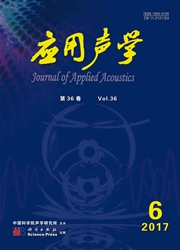

 中文摘要:
中文摘要:
为了使超声换能器适应变化比较剧烈的负载,本文通过分析超声换能器在并联谐振频率附近工作时的频率特性和实际需求特点,利用变压器初级匹配方法得到了更好的频率特性,并对比了换能器空载和带负荷情况下的阻抗特性曲线,提出了复合式自动频率跟踪方法,空载时找到超声换能器最小电流的对应的频率点,加载过程中利用比例积分微分算法实现频率的快速跟踪。并对超声换能器在不同负载时的功率输出进行了实验,结果表明,复合式频率跟踪方法可以稳定地跟踪到超声换能器的并联谐振频率,能实现超声换能器的功率自调节,对提高换能器的工作效率和负荷适应能力具有实际的指导意义和应用价值。
 英文摘要:
英文摘要:
In order to make the ultrasonic transducer adapt to fast-changing load, by analyzing the frequency characteristics of ultrasonic welding transducer near its parallel resonant frequency and the practical demand, a primary matching method was developed to get a better frequency characteristics. Then, comparisons of the transducer impedance curve between on load and no-load were made. The composite tracking strategy was that the frequency with the minimum current was found when the transducer had no load and was quickly tracked with the proportional integral derivative algorithm when it had load. An experiment about the output power of ultrasonic welding transducer under different load was made. The research results show the tracking method can track the parallel resonance frequency of ultrasonic transducer stably and reflect the characteristics of ultrasonic transducer automatic power adjustment. It has practical significance and application value for ultrasonic transducer to improve the efficiency and adaptability.
 同期刊论文项目
同期刊论文项目
 同项目期刊论文
同项目期刊论文
 期刊信息
期刊信息
